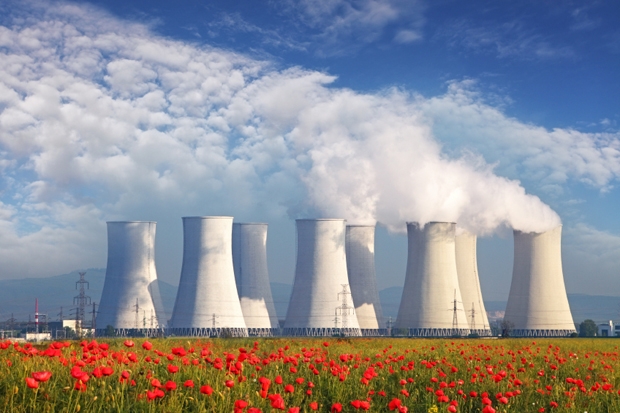‘I visited the black marble obelisk which marks the epicentre of the explosion, and I saw the plain domestic wall-clock retrieved intact from the rubble with its bent hands recording the precise time of day when the city was obliterated: 11.02 a.m.
I was glad to be alone, because I could not have spoken.’ Published here 20 years ago, that was my memory of Nagasaki, the target on 9 August 1945 of the second and last nuclear weapon ever deployed. The subsequent seven decades of non-use of nuclear arms — deterred by that most chilling of threats, ‘mutually assured destruction’ — is one of the miracles of modern history, given the unsafe hands in which much of the materiel was held. The sadness is that the opportunity for peaceful use of the same science to provide sustainable, abundant, non–carbon-based power has been gradually muddled away by underinvestment and political shilly-shallying.
In Japan, the entire nuclear industry has been shut down since 2011, when a tsunami led to meltdown at Fukushima, mass evacuation, and the discovery of serious safety faults even though no one died of radiation. Prime minister Shinzo Abe has pressed for a restart, to reduce Japan’s energy import burden, and a reactor at Sendai became the first (of 48 across the country) to resume operations this week. But with echoes of 1945 as well as Fukushima fresh in mind, the Japanese public remain anxiously unpersuaded by statistics of nuclear safety.
Meanwhile in Germany, nuclear power is due to be eliminated by 2022, and the Grafen-rheinfeld station that has supplied Bavaria’s factories for the past 35 years closed in June. In America, too, there’s a growing sense that the nuclear lobby has lost the argument: in an energy scene transformed by cheap fracked gas and advances in solar technology, several new nuclear schemes have been scrapped; the few still going forward are all behind schedule and over budget, and state governments have repeatedly been asked to bail out operators whose existing plants have become uncompetitive.
As for Hinckley Point, the only new nuclear project in hand in the UK, there are continuing doubts over the viability of the chosen European Pressurised Reactor model (which has had problems in France and Finland), the timetable for construction, and a guaranteed ‘strike price’ per megawatt hour of eventual output which is twice the current wholesale price of electricity.









Comments
Join the debate for just £1 a month
Be part of the conversation with other Spectator readers by getting your first three months for £3.
UNLOCK ACCESS Just £1 a monthAlready a subscriber? Log in